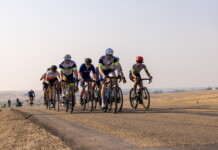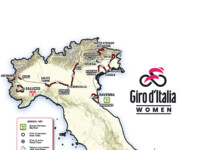At its essence, competitive cycling is a team sport. Whether you’re out at the big local group ride, a training race, or one of the season’s big cycling events, the squads that ride as cohesive jet fighter units are usually the most dangerous. Conversely, even teams with numbers and talent that don’t ride in a unified manner – that choose not to share the work of controlling a race and neutralizing opponents – are generally less successful.
Like any relationship or group endeavor, what largely dictates the dynamic and problem-solving efficacy of the whole begins with the “chemistry” shared between each of the riders. Choosing the right group to ride with, or the best suited team to race with, can make or break your season.
I lived and worked in Italy for various companies in the bike industry some years ago, and it was interesting to experience first-hand Italian professional racing of that era. There was so much talent, as well as support and money being invested in teams, including the national program. Yet the italiani often struggled to race as cohesive squads; they were not always willing to sacrifice for one another, and it showed. The big exception was whatever team was riding for Cipollini. Man, those were some of the best leadout trains ever put together, making Cipollini one of the most prolific sprint champions in history.
One autumn at a big annual Italian cycling awards ceremony I had attended in previous years, a friend in attendance told me how a big public argument broke out. In this particular case, allusions and allegations were made that one or more of the national men’s riders had undermined his teammate’s chance at the World Championship Road Race title. This had such a negatively stratifying effect on Italian cycling at the time.
Not winning a race as a squad that put in an honorable cohesive effort is one thing; losing it because of division or ego is another.
Since then, Italians have become some of the best team riders in the world, and some of our American teams have also been exemplary, tactically speaking: HTC High Road, BMC and – again, strictly tactically speaking – US Postal / Discovery. Interestingly, the Radio Shack team was often NOT as unified as they should have been, because of internal conflict.
I want to list some concepts that we can cover in more detail in upcoming issues. For now, I’d to introduce each to put readers and teams in an advantageous mindset heading into the 2013 race season. Topics to consider:
- Riding tempo. This is a pace established by a team to discourage drastic changes in speeds, and to discourage breakaways. It can also serve to reel in breakaways without necessarily expending the same energy as “chasing”.
- Attacking & counter-attacking. Unless a very strong rider puts in an attack at just the right time or on just the right terrain (i.e. a formidable climber on a significant uphill section), attacks often don’t succeed in causing a split in the group, but it can “soften” up the group for a counter-attack that yields a gap.
- Attacking as a decoy. Attacks can be made in an attempt to get the right rider (e.g. one with a good sprint or uphill finish kick) away or to force other teams to chase. By compelling opponents to do the work, the assertive team enables its key riders to “sit in” and rest so that they will have fresh legs for the next tactical move.
- Going with a breakaway vs. chasing a breakaway. It is always much easier to jump on an opponent’s wheel as a breakaway is forming than to be in the wind closing a gap. Riding near the front and being vigilant can mean the difference between making the selection and missing out, the latter forcing your team to chase.
- Chasing vs. bridging. There is also a difference between going to the front of the peloton to chase down a breakaway and trying to get away from the pack with a gap in the hope of getting to the breakaway without towing anyone (or too many) in the process.
- Waiting for a detained teammate. If a strong teammate gets sidelined, depending on the type of race, you need to know in advance how to deal with the situation. Do you drop yourself from the pack as the teammate gets a wheel from a support vehicle or wheel pit, or do you stop and give them your own wheel? Both options represent team racing at its best; you just need to know how to be a help as opposed to taking both yourself and the teammate in need out of the race.
- Protecting your team leader. Cycling can be a very noble sport, with savvy and selfless riders doing everything they can toward the success of one or more teammates. Watching teams keep their leaders out of the wind, in good position without those leaders having to exert themselves too much, and led out for a clean shot at victory in the sprint is exhilarating. No matter how good you are, or how much potential you believe you have, if you don’t learn early on how to be an excellent team/support rider, or domestique, your opportunities will be severely limited. For elite cyclists, it can mean the difference between getting a pro contract and languishing forever in the land of could-have-been. For cyclists of all levels, the better a team rider you are, the more you will be a desirable entity for discerning clubs, teams and potential teammates.
- Blocking. Man-oh-man, this can be a controversial subject. Suffice it to say that blocking has and always will be an important aspect of team racing. It can be implemented in a variety of different ways, and by smaller or larger teams. We’ll address this in detail at a later date, both the mechanics as well as the ethics of various forms of blocking.
- Leadouts. At the end of the race, line your team up and get or keep your best sprinter near the front, ready to jump off the your last leadout rider’s wheel in a final explosive bid for glory along the final 100-200 meters to the finish line.
Hopefully this summary not only piques your interest and serves as motivation to get better educated about racing. It should also serve as a call to arms, as an affirmation of the exalted you role that you can play as an individual and as a member of a squad in our collective goal to elevate cycling in Utah and the West at every level, in women’s, men’s and junior racing.
Mark Deterline and Dave Harward offer over thirty years of combined endurance training and competitive experience. Plan 7 Endurance Coaching provides professional coaching, biomechanics (bike fit or runner’s stride analysis) and performance testing for athletes of all levels. Email them at: [email protected].










